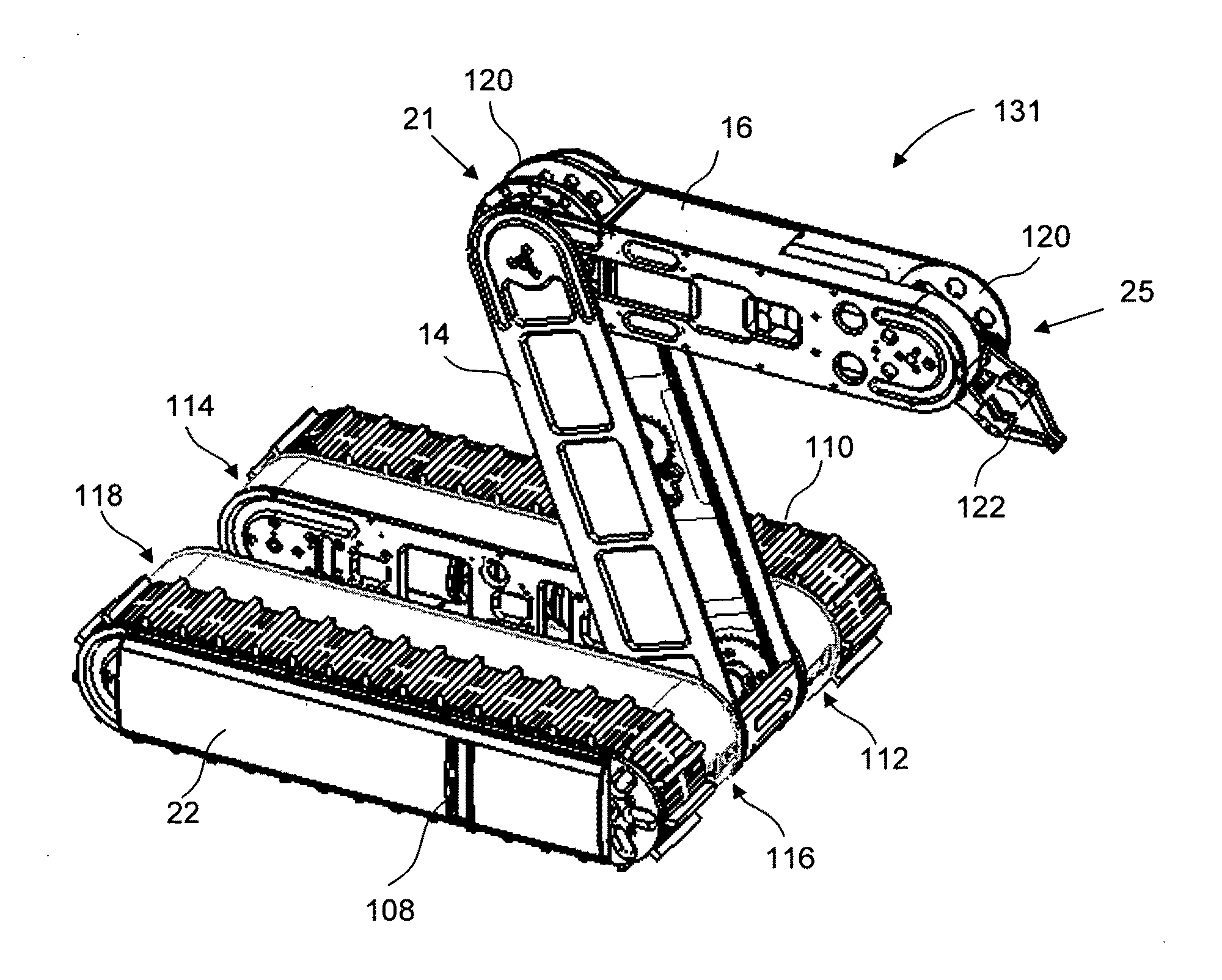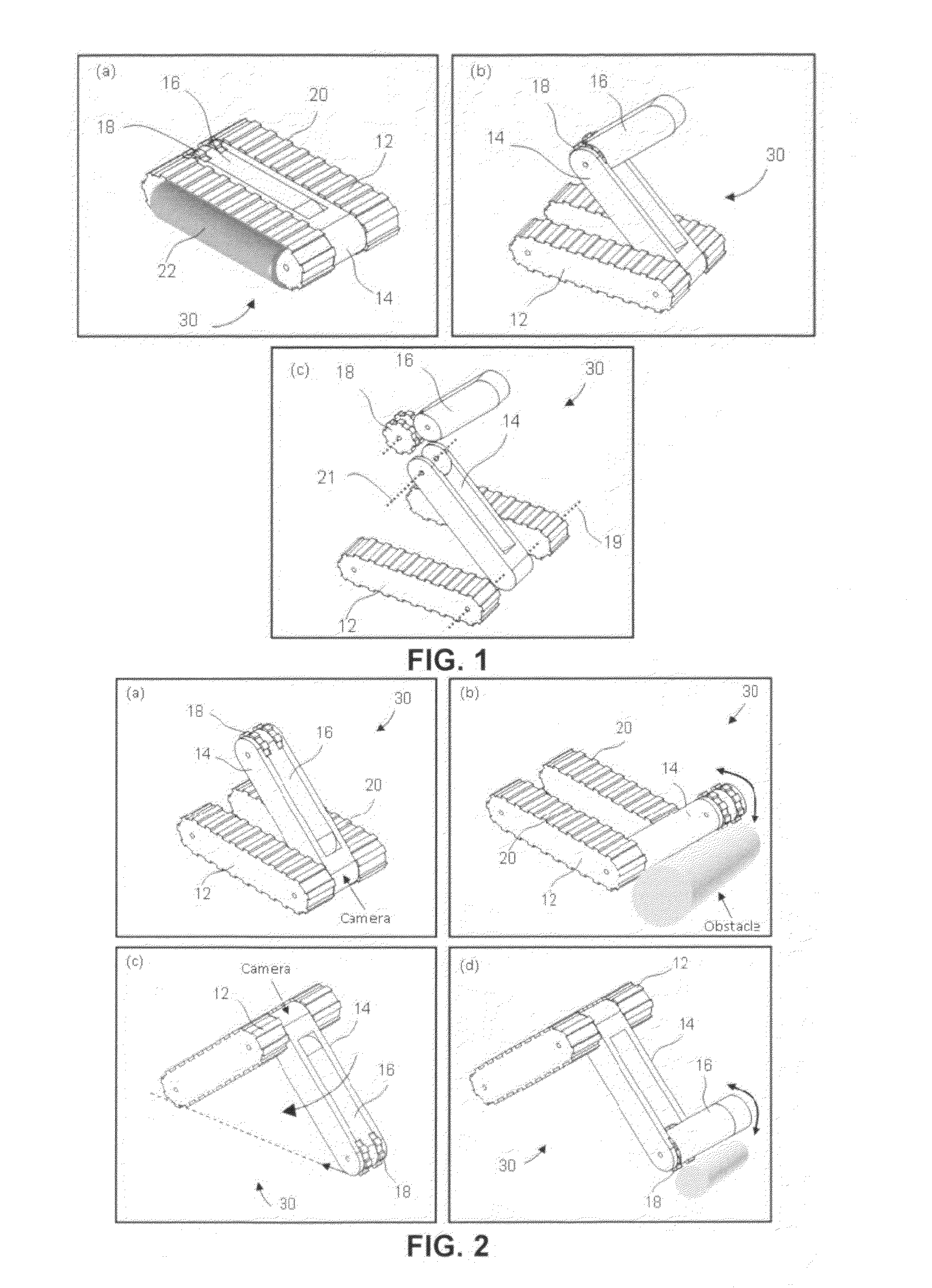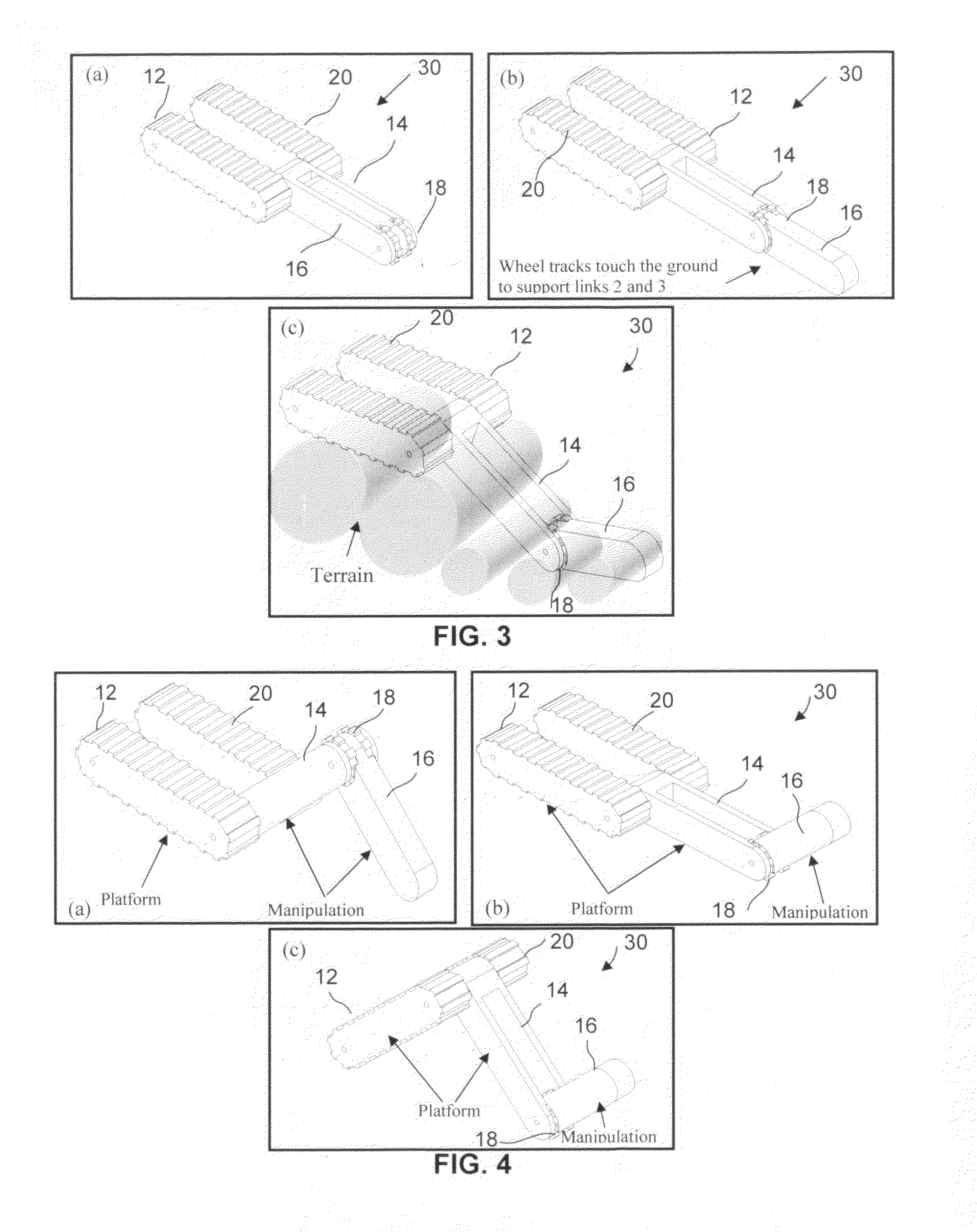Hybrid mobile robot
- Summary
- Abstract
- Description
- Claims
- Application Information
AI Technical Summary
Benefits of technology
Problems solved by technology
Method used
Image
Examples
Embodiment Construction
[0076]The present invention introduces a new paradigm of mobile robot design for locomotion and manipulation purposes that was realized based on identifying and quantifying the existing gap between the traditional structures of typical mobile robots and their range of applications. Typically, a mobile robot's structure consist of a mobile platform that is propelled with the aid of a pair of tracks, wheels or legs, and a manipulator arm attached on top of the mobile platform to provide the required manipulation capability. However, the presence of an arm limits the mobility. On the other hand, there are several designs of mobile robots with the ability to return itself when flipped-over, but this is not possible if the robot is equipped with a manipulator arm. This gap is bridged in the approach herein by providing a new paradigm of mobile robot design that provides locomotion and manipulation capabilities simultaneously and interchangeably. The approach is also a new way of robot-su...
PUM
 Login to View More
Login to View More Abstract
Description
Claims
Application Information
 Login to View More
Login to View More - R&D
- Intellectual Property
- Life Sciences
- Materials
- Tech Scout
- Unparalleled Data Quality
- Higher Quality Content
- 60% Fewer Hallucinations
Browse by: Latest US Patents, China's latest patents, Technical Efficacy Thesaurus, Application Domain, Technology Topic, Popular Technical Reports.
© 2025 PatSnap. All rights reserved.Legal|Privacy policy|Modern Slavery Act Transparency Statement|Sitemap|About US| Contact US: help@patsnap.com



